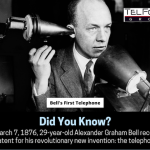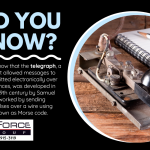The Invention of Radio: Revolutionizing Telecommunications
From Marconi to Wi-Fi: The Evolution of Radio Technology
The invention of the radio was a significant milestone in the history of telecommunications. It allowed people to communicate with each other over long distances, and it revolutionized the way we transmit and receive information. In this article, we’ll take a look back at the history of radio technology and how it has evolved over the years.
The Early Years of Radio
The first radio communication was made in 1895 by Italian physicist Guglielmo Marconi. Marconi sent a radio signal across a distance of about 1.5 miles, which was a remarkable achievement at the time. He then went on to develop the first practical radio communication system, which he demonstrated in 1901 by sending a signal across the Atlantic Ocean.
Radio Saves Lives
Marconi’s radios helped end ocean isolation, saving lives, including the survivors of the Titanic! The Titanic disaster in 1912 highlighted the importance of radio technology for maritime safety, as the ship’s radio operators were able to call for help and alert other vessels in the area.
In 1909, Marconi was awarded the Nobel Prize in Physics for his radio work, cementing his place in history as one of the most influential inventors of the 20th century. His pioneering work laid the foundation for modern telecommunications and made it possible for people to communicate over long distances in real-time.
Radio Goes Mainstream
Radio technology became more widely available in the 1920s and 1930s, and it quickly became a popular form of entertainment. People could listen to news broadcasts, music, and other programs from the comfort of their own homes. The first commercial radio station in the United States, KDKA in Pittsburgh, began broadcasting in 1920.
The Rise of Television
The invention of television in the 1940s signaled the beginning of a new era in telecommunications. Television allowed people to see and hear events happening in real-time, and it quickly became the dominant form of entertainment. However, radio remained an important medium for news and music programming.
The Digital Age
The invention of the transistor in the 1950s paved the way for the development of digital technologies. In the 1960s and 1970s, radio stations began using digital technology to transmit their signals, which resulted in clearer sound quality and reduced interference. The development of satellite radio in the 1990s further revolutionized radio technology by allowing people to listen to programs from anywhere in the world.
The Future of Radio
Today, radio technology continues to evolve. Wi-Fi and Bluetooth technology have made it possible to stream audio content wirelessly, and many people now listen to podcasts and other on-demand audio programming. However, traditional radio broadcasting remains popular, particularly in areas with limited internet connectivity.
Conclusion:
The invention of the radio revolutionized the way we communicate and transmit information. From its humble beginnings in the late 19th century to the digital age, radio technology has evolved significantly. Whether you’re listening to traditional radio broadcasting or streaming audio content over Wi-Fi, radio continues to play an important role in our lives.
Sources:
- “The History of Radio.” ThoughtCo. https://www.thoughtco.com/history-of-radio-1992534
- “A Brief History of Radio Technology.” The Balance Small Business. https://www.thebalancesmb.com/history-of-radio-technology-2948217
- “The History of the Transistor.” IEEE Spectrum. https://spectrum.ieee.org/the-history-of-the-transistor
- “Satellite Radio.” Federal Communications Commission. https://www.fcc.gov/media/radio/satellite-radio
- “The Future of Radio.” Radio World. https://www.radioworld.com/news-and-business/the-future-of-radio
Keywords: radio technology, telecommunications, Guglielmo Marconi, digital age, satellite radio, Wi-Fi, Bluetooth, history of radio, radio broadcasting, television





